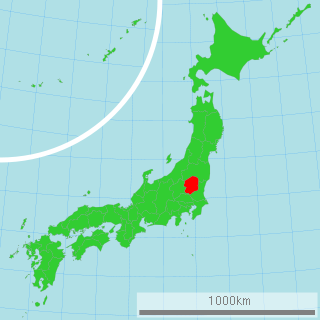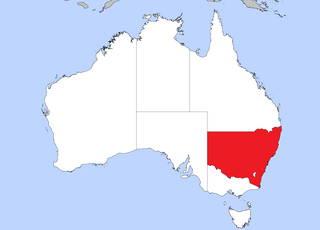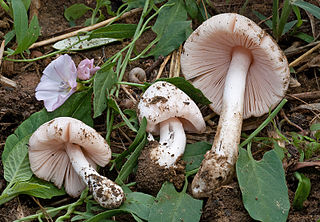| Barcheria | |
|---|---|
| Scientific classification | |
| Kingdom: | |
| Division: | |
| Class: | |
| Order: | |
| Family: | |
| Genus: | Barcheria T.Lebel (2008) |
| Type species | |
| Barcheria willisiana T.Lebel (2008) | |
Barcheria is a fungal genus in the family Agaricaceae. This is a monotypic genus, containing the single sequestrate (having underground fruiting bodies) species Barcheria willisiana, found in western Australia.
The type material was collected from mallee woodlands near Norseman, Western Australia. The genus name Barcheria honours Barbara Archer, "an enthusiastic and versatile collector who has contributed much to the knowledge of the arid-land fungi of Western Australia". [1] The specific epithet willisiana acknowledges the Jim Willis family of Victoria. [2]
Fruit bodies of Barcheria are small, measuring 15–65 mm (0.6–2.6 in) by 13–55 mm (0.5–2.2 in). They have a fragile texture, lack a stipe, and have purplish-brown scales on the outer skin (peridium). The internal gleba changes colour from cream to pale after it is exposed to air. Spores are thick walled and smooth, roughly spherical to broadly ellipsoid, and hyaline (translucent) when mounted in water or dilute potassium hydroxide. They have dimensions of 10.5–16.5 by 8–12 μm. Basidia (spore-bearing cells) are two-spored and measure 28–39.5 by 5–10 μm; cystidia are rare. The hyphae lack clamp connections. [2]
Other sequestrate fungi in the family Agaricaceae include Montagnea , Gyrophragmium , Longula , and Endoptychum . In contrast with these genera, Barcheria lacks a stipe, the gleba changes colour upon exposure, and its spores are hyaline. [2]
The fungus is known only from the type locality, where it was found fruiting from July to August in red clay loam at a roadside verge. Nearby vegetation included species of Eucalyptus , Allocasuarina , and Melaleuca . [2]

Secotioid fungi are an intermediate growth form between mushroom-like hymenomycetes and closed bag-shaped gasteromycetes, where an evolutionary process of gasteromycetation has started but not run to completion. Secotioid fungi may or may not have opening caps, but in any case they often lack the vertical geotropic orientation of the hymenophore needed to allow the spores to be dispersed by wind, and the basidiospores are not forcibly discharged or otherwise prevented from being dispersed —note—some mycologists do not consider a species to be secotioid unless it has lost ballistospory.

Phallaceae is a family of fungi, commonly known as stinkhorns, within the order Phallales. Stinkhorns have a worldwide distribution, but are especially prevalent in tropical regions. They are known for their foul-smelling, sticky spore masses, or gleba, borne on the end of a stalk called the receptaculum. The characteristic fruiting-body structure, a single, unbranched receptaculum with an externally attached gleba on the upper part, distinguishes the Phallaceae from other families in the Phallales. The spore mass typically smells of carrion or dung, and attracts flies, beetles and other insects to help disperse the spores. Although there is great diversity in body structure shape among the various genera, all species in the Phallaceae begin their development as oval or round structures known as "eggs". The appearance of Phallaceae is often sudden, as gleba can erupt from the underground egg and burst open within an hour. According to a 2008 estimate, the family contains 21 genera and 77 species.

The Agaricaceae are a family of basidiomycete fungi and include the genus Agaricus, as well as basidiomycetes previously classified in the families Tulostomataceae, Lepiotaceae, and Lycoperdaceae.
Limnoperdon is a fungal genus in the monotypic family Limnoperdaceae. The genus is also monotypic, as it contains a single species, the aquatic fungus Limnoperdon incarnatum. The species, described as new to science in 1976, produces fruit bodies that lack specialized structures such as a stem, cap and gills common in mushrooms. Rather, the fruit bodies—described as aquatic or floating puffballs—are small balls of loosely interwoven hyphae. The balls float on the surface of the water above submerged twigs. Experimental observations on the development of the fruit body, based on the growth on the fungus in pure culture, suggest that a thin strand of mycelium tethers the ball above water while it matures. Fruit bodies start out as a tuft of hyphae, then become cup-shaped, and eventually enclose around a single chamber that contains reddish spores. Initially discovered in a marsh in the state of Washington, the fungus has since been collected in Japan, South Africa, and Canada.

Calbovista is a fungal genus containing the single species Calbovista subsculpta, commonly known as the sculptured puffball, sculptured giant puffball, and warted giant puffball. It is a common puffball of the Rocky Mountains and Pacific Coast ranges of western North America. The puffball is more or less round with a diameter of up to 15 cm (6 in), white becoming brownish in age, and covered with shallow pyramid-shaped plates or scales. It fruits singly or in groups along roads and in open woods at high elevations, from summer to autumn.

Gymnogaster is a genus of fungi in the family Boletaceae. It is a monotypic genus, containing the single secotioid species Gymnogaster boletoides, found in Australia. The fungus produces bright yellow fruit bodies with a light brown internal gleba, and the fruit bodies turn blue then dark brown after bruising or handling.

Amanita nothofagi is a species of fungus in the family Amanitaceae. Endemic to New Zealand, the species was first described by mycologist Greta Stevenson in 1962. The fruit bodies have dark brown caps that are up to 13 cm (5.1 in) in diameter and covered with patches of soft greyish-brown scales or warts. The gills underneath the cap are crowded together, free from attachment to the stem, and white, becoming tinged with yellow in age. The stem of the mushroom is 4–14 cm (1.6–5.5 in) long by 0.5–2.5 cm (0.2–1.0 in) thick, and has a ring. The spore print is white, and individual spores are spherical to ellipsoid, measuring 7.5–9 by 7.5–9 micrometres. The mushroom may be confused with another New Zealand species, A. australis, but can be distinguished by certain characteristics. Amanita nothofagi is a mycorrhizal species, and grows in association with native New Zealand trees such as Southern Beech.

Aseroe coccinea is a species of stinkhorn fungus in the genus Aseroe. First reported in Japan in 1989, it was not formally validated as a species until 2007, the delay related to a publication error. The receptacle, or fruit body, begins as a partially buried whitish egg-shaped structure, which bursts open as a hollow white stipe with reddish arms, then erupts and grows to a height of up to 15 mm (0.6 in). It matures into a star-shaped structure with seven to nine thin reddish tubular "arms" up to 10 mm (0.4 in) long radiating from the central area. The top of the receptacle is covered with dark olive-brown spore-slime, or gleba. A. coccinea can be distinguished from the more common species A. rubra by differences in the color of the receptacle, and in the structure of the arms. The edibility of the fungus has not been reported.

Aseroe floriformis is a species of fungus in the stinkhorn family Phallaceae. Described as a new species in 2005, it is known only from northeast Brazil, where it grows on sandy soil. The fruit body has a raspberry-colored stipe, and, unlike other members of the genus Aseroe does not have radiating branches.

Cortinarius porphyroideus, commonly known as purple pouch fungus, is a secotioid species of fungus endemic to New Zealand. It was one of six species that appeared as part of a series depicting native New Zealand fungi on stamps, released in 2002.

Kalapuya brunnea is a species of truffle in the monotypic fungal genus Kalapuya. The truffle occurs only in the Pacific Northwest region of the United States, in western Oregon and northern California. Known locally as the Oregon brown truffle, it was formerly thought to be an undescribed species of Leucangium until molecular analysis demonstrated that it was distinct from that genus. The truffle is reddish brown with a rough and warty outer skin, while the interior spore-producing gleba is initially whitish before developing greyish-brown mottling as it matures. Mature truffles have an odor resembling garlicky cheese, similar to mature Camembert. The species has been harvested for culinary purposes in Oregon.

Thaxterogaster cinereoroseolus is a species of truffle-like fungus in the family Cortinariaceae. Found in New South Wales, Australia, the species was described as new to science in 2010.

Cortinarius kaputarensis is a species of truffle-like fungus in the family Cortinariaceae. Described as a new species in 2010, it is known only from New South Wales in Australia.

Cortinarius maculobulga is a species of truffle-like fungus in the family Cortinariaceae. Found only in New South Wales, Australia, it was described as new to science in 2010.

Thaxterogaster nebulobrunneus is a species of truffle-like fungus in the family Cortinariaceae. Found in New South Wales, Australia, the species was described as new to science in 2010.

Cortinarius sinapivelus is a species of truffle-like fungus in the family Cortinariaceae. Known only from New South Wales, it was described as new to science in 2010.

Roridomyces austrororidus, commonly known as the austro dripping bonnet, is a species of agaric fungus in the family Mycenaceae. Described as new to science in 1962 by American mycologist Rolf Singer, it is found in South America, New Zealand, and Australia, where it grows on rotting wood.

Volvopluteus earlei is a species of mushroom in the family Pluteaceae. It was originally described in 1911 by American mycologist William Alphonso Murrill as Volvariopsis earlei, based on collections made in a Cuban banana field. The fungus was later shuffled to the genera Volvaria and Volvariella before molecular studies placed it in Volvopluteus, a genus newly described in 2011.

Pholiota nubigena, commonly known as the gastroid pholiota or the bubble gum fungus, is a species of secotioid fungus in the family Strophariaceae. It is found in mountainous areas of the western United States, where it grows on rotting conifer wood, often fir logs. It fruits in spring, often under snow, and early summer toward the end of the snowmelt period in high mountain forests. Fruit bodies appear similar to unopened mushrooms, measuring 1–4 centimetres tall with 1–2.4 cm diameter caps that are whitish to brownish. They have a short but distinct whitish stipe that extend through the internal spore mass (gleba) of the fruit body into the cap. The gleba consists of irregular chambers made of contorted gills that are brownish in color. A whitish, cottony partial veil is present in young specimens, but it often disappears in age and does not leave a ring on the stipe.

Cortinarius diaphorus is a species of purple pouch fungus in the genus Cortinarius endemic to Aotearoa New Zealand.